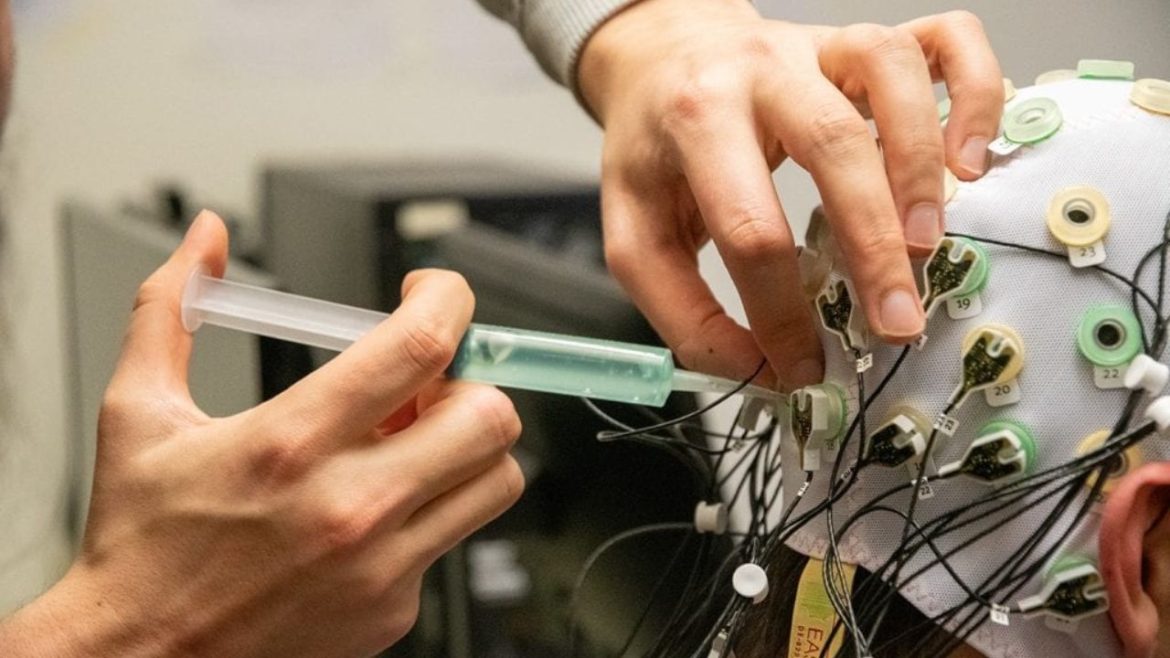Electroencephalography (EEG) is an important part of modern medicine as it measures the electrical activity in the brain to measure neurological activity, to measure the depth of anesthesia, and to make surgical decisions. The main part of this process is the EEG electrode, a small but highly specialized device that records the appropriate signal of the brain. The efficiency of EEG monitoring is highly dependent on the kind, material, and design of the eeg electrodes utilized. All types of electrodes are used in a particular clinical application, which guarantees that medical professionals will be able to obtain reliable results in a variety of settings, including both an operating room and an intensive care unit.
Understanding the Role of EEG Electrodes
EEG electrodes serve as the point of contact between the EEG and the patient (skin or scalp and its monitoring device). They pick the electrical signals generated in the brain and send them with conductive cables to the EEG system, where they are analyzed. Given that brain signals are very weak (often in the microvolt range), the stability of contacts on the electrode is paramount, as well as reducing noise. Electrode characteristics that are required in various medical situations include conductivity, comfort, reusability, and ease of insertion. It is due to this reason that EEG electrodes are produced in various designs and materials that are applicable to particular procedures and patient needs.
Gold electrodes
High-precision medical applications of gold electrodes include intraoperative EEG and BIS (Bispectral Index) systems during anesthesia. Gold is characterized by its great conductivity, resistance to corrosion, and biocompatibility, which is appropriate in long surgical operations; hence, signal stability is a major concern. Even the smallest signal interruption can cause the incorrect anesthesia depth reading or slow identification of brain reaction in such settings. The gold electrodes provide low impedance and uniformity in operation, which enables the anesthesiologists to have good control over the level of sedation of the patient.
Silver Chloride Electrodes
Silver/silver chloride (Ag/AgCl) are popular EEG electrodes that are not favored because they offer balanced responses. They are very sensitive to signals, and at the same time, they are highly resistant to electrical noise and interference; therefore, they can be used in the hospital ward, neurology department, and research laboratories. These electrodes deliver consistent results during long durations, which is very crucial in sleep research, in monitoring epilepsy, and in brain diagnostics. Their universal utility and stability render them among the widely used types of electrodes in various health care environments.
Pure Silver Electrodes
The use of pure silver electrodes is necessary in cases where the level of signal sensitivity is critical (as in the case of intensive care units, ICUs). The electrodes are sensitive to minor changes in voltage in brain activity, and this is vital when attending to unstable or extremely ill patients. The conductivity of silver is high, and therefore, even the minute differences in electrical potential are correctly conveyed. Nonetheless, they tend to be delicate, and thus careful handling of these electrodes may be necessary, and certain cleaning or maintenance procedures may be necessary to ensure that they operate effectively in the long run.
Needle Electrodes
EEG electrodes are of the needle type, intended to be used in invasive situations, i.e., neurosurgery or any procedure where there is a need to be in contact with the brain or the nerve tissue. They can be placed accurately under the skin or within a particular layer of tissue due to their sharp stainless steel tips, so that on the occasion that surface electrodes are unable to give adequate data, it can be safely recorded. Neurosurgical applications of needle electrodes are essential in the process of localizing activity of the brain, determining the location of a seizure, or localizing where surgery should be done. Although they are not normally used in routine EEG monitoring, they are essential in more specialized surgical cases.
Conclusion
All types of EEG electrodes are tailored to meet the special needs of a particular medical process. The right electrode is used to guarantee the accuracy of the signal, patient safety, as well as efficiency in operation, whether it is used in anesthesia monitoring, neurological diagnostics, or even surgical guidance. With the progress in technology, EEG electrode manufacturers such as Medke are still improving the material and design of EEG electrodes to match the compatibility and reliability standards required globally. This continuous development, in which precision engineering and clinical excellence combine to provide the most accurate picture of the brain activity, is the future of EEG monitoring.
